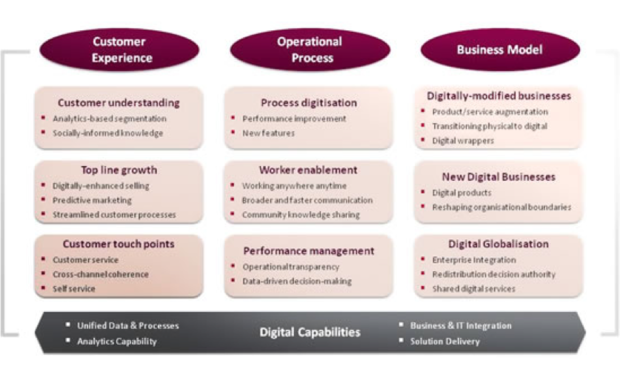Digital transformation: Why it’s important to your organization
Digital technologies – are changing the face of business. And this change is accelerating and faster than the pace of transformation in organizations
Is your organization embracing digital transformation? What is digital transformation exactly? And if you are not embracing it, should you?
Organizations need to evolve to address the changing business landscapes. Ideally, IT spending is driven by the need to meet business requirements. Business leaders want IT to be focused on business results, innovation, and continuous improvement. Digital transformation can be defined as the acceleration of business activities, processes, competencies, and models to fully leverage the changes and opportunities of digital technologies and their impact in a strategic and prioritized way.
In fact, digital transformation is business transformation. Some prefer to use the term digital business transformation, which is more in line with the business aspect of the transformation. These digital business transformations are influenced/driven by the following factors: Technology innovation, customer behavior, demand, and external environmental factors.
Technological innovations lead to what we call technology disruptions. But transformation is not just about technology innovations and their disruption on the business. It is also about how these technological innovations are adopted and used. Do these innovations bring value to the organization? Are they easily adopted or is the organization experiencing difficulties integrating this new technology? This brings us to the next factor: customer behavior. What are the customer demands and expectations of the business (and the demands on technology to meet business needs)? Customers demand increased technological capabilities combined with the desire for ease of use. And finally, organizations have to deal with external influences such as regulatory laws, changing economy, market competition, and business partner demands.
A Forrester Consulting research study commissioned by Accenture Interactive found that the key drivers of digital transformation are profitability, customer satisfaction, and increased speed-to-market. To further clarify, the study asked decision-makers about their broad strategic priorities over the next year. The number one choice was “improving the experience of customers, ” followed by growing revenues, improving differentiation, and reducing costs. In my experience, this is easier said than done. Reminds me of what I used to tell my clients when I ran a software development company: “You can get it done cheap, done well, or done quickly. Pick two out of three.”
Capgemini and MIT Center for Digital Business in a three-year study defined an effective digital transformation program as shown in Figure 1 below:

Capgemini Consulting Digital Transformation
The take-away from this study is that in a digital business transformation context, all these aspects: business functions, processes, activities, assets, models, and activities are interconnected. This is an essential aspect of digital transformation: the interdependency and inter-contentedness of everything. From business processes and models to business activities and every single activity of the organization.
Digital business transformation is the ultimate challenge in change management. It impacts not only industry structures and strategic positioning but it affects all levels of an organization (every task, activity, process) and even its extended supply chain. Business leaders must constantly challenge their organizations to ensure this change can unlock productivity gains and significant competitive advantage all while delivering exceptional customer experience.
What are your thoughts on digital business transformation? What challenges do you face?




